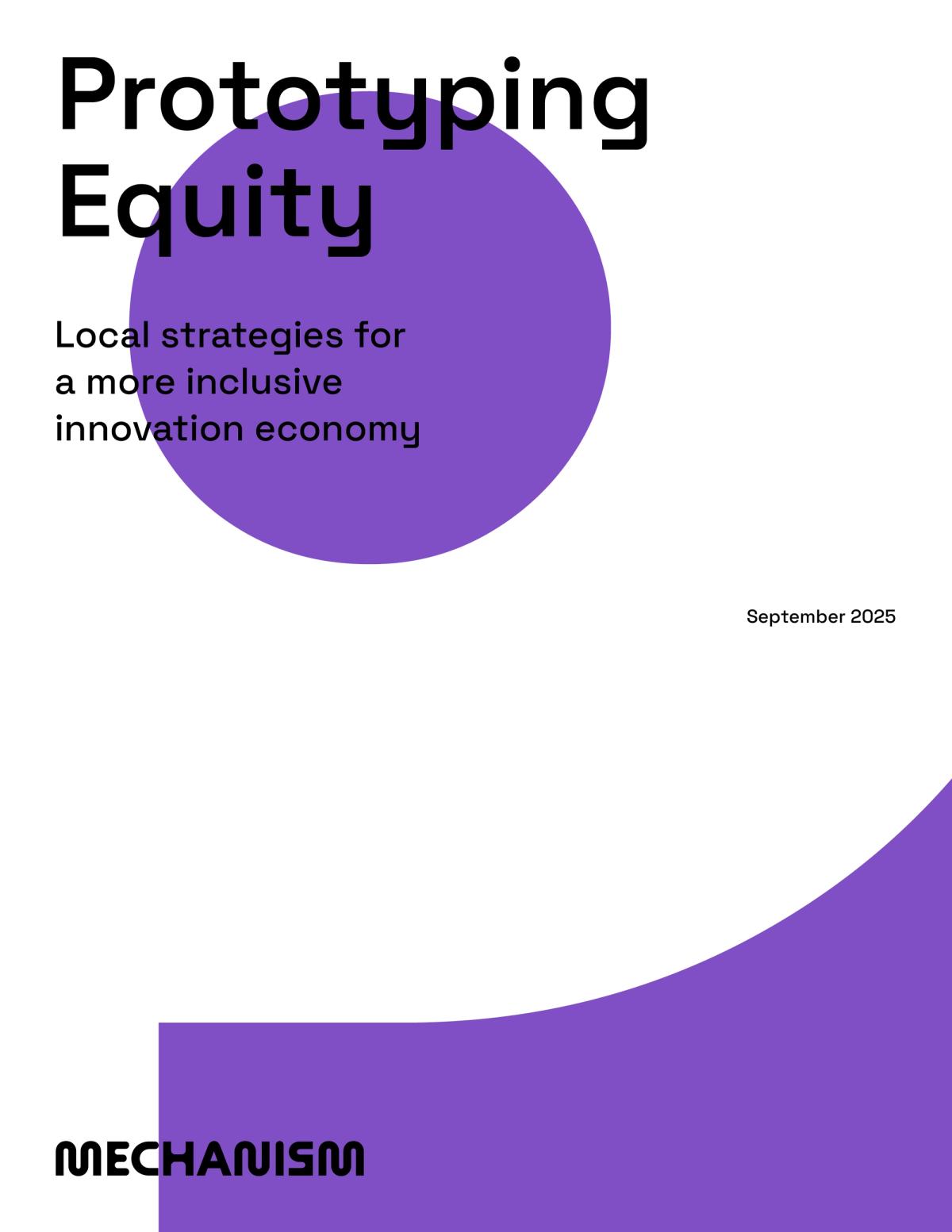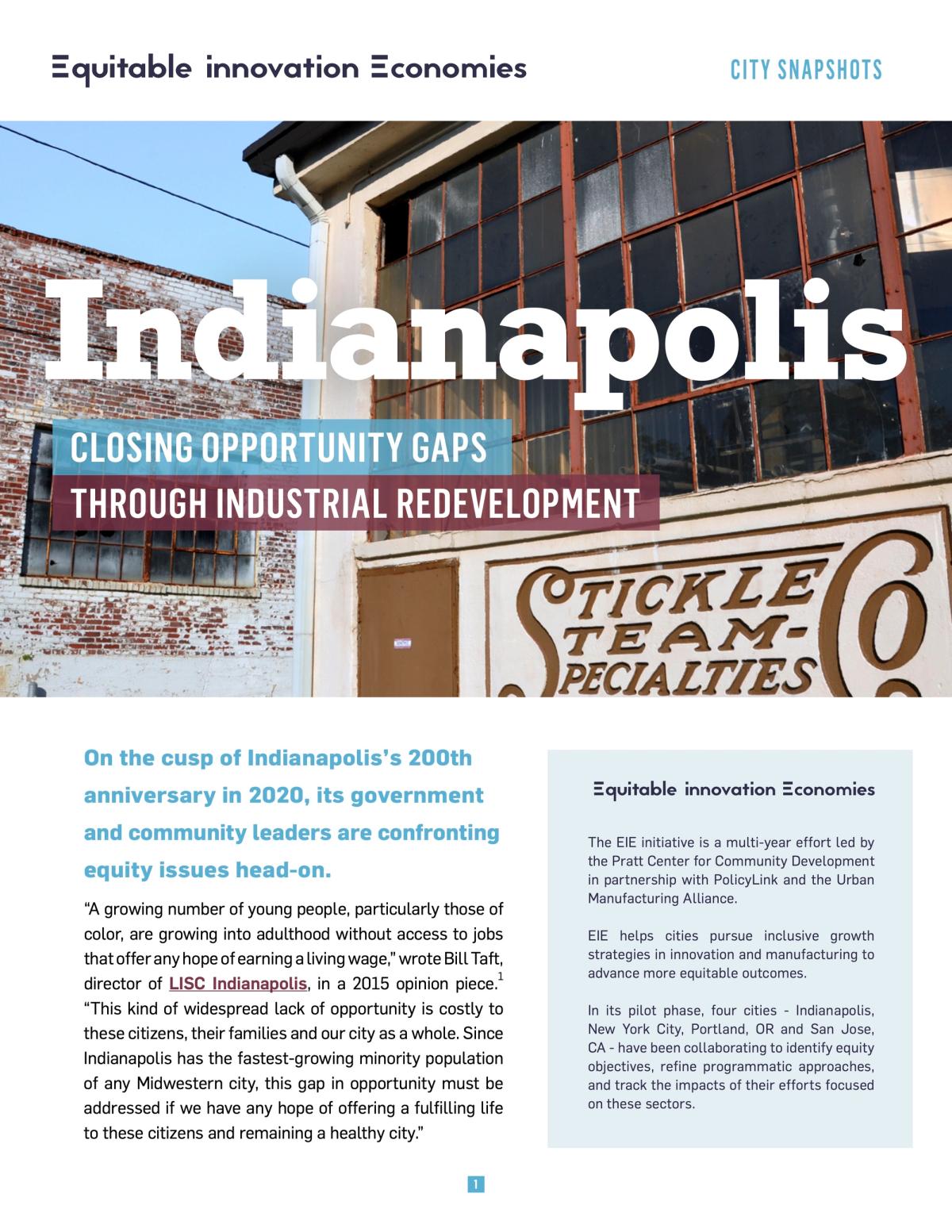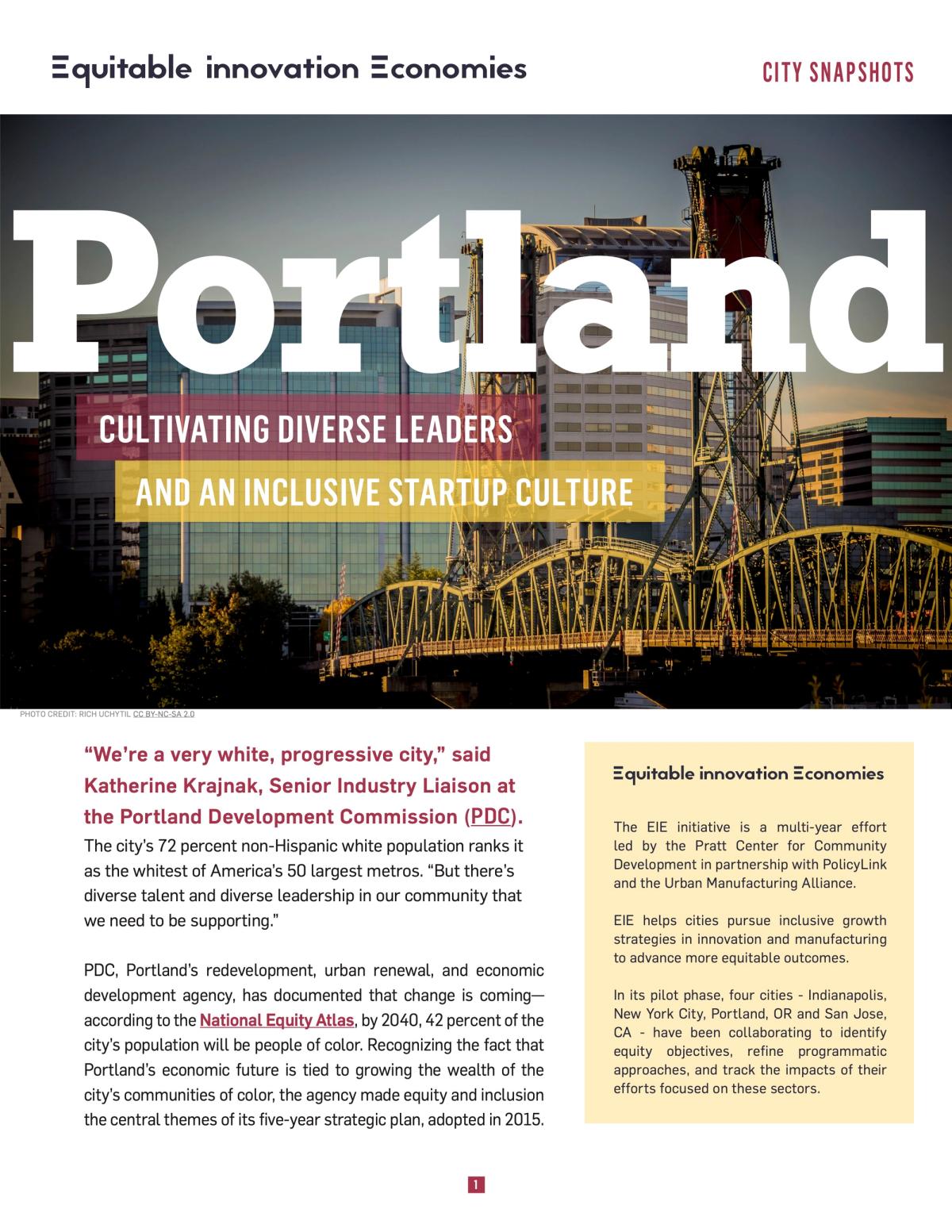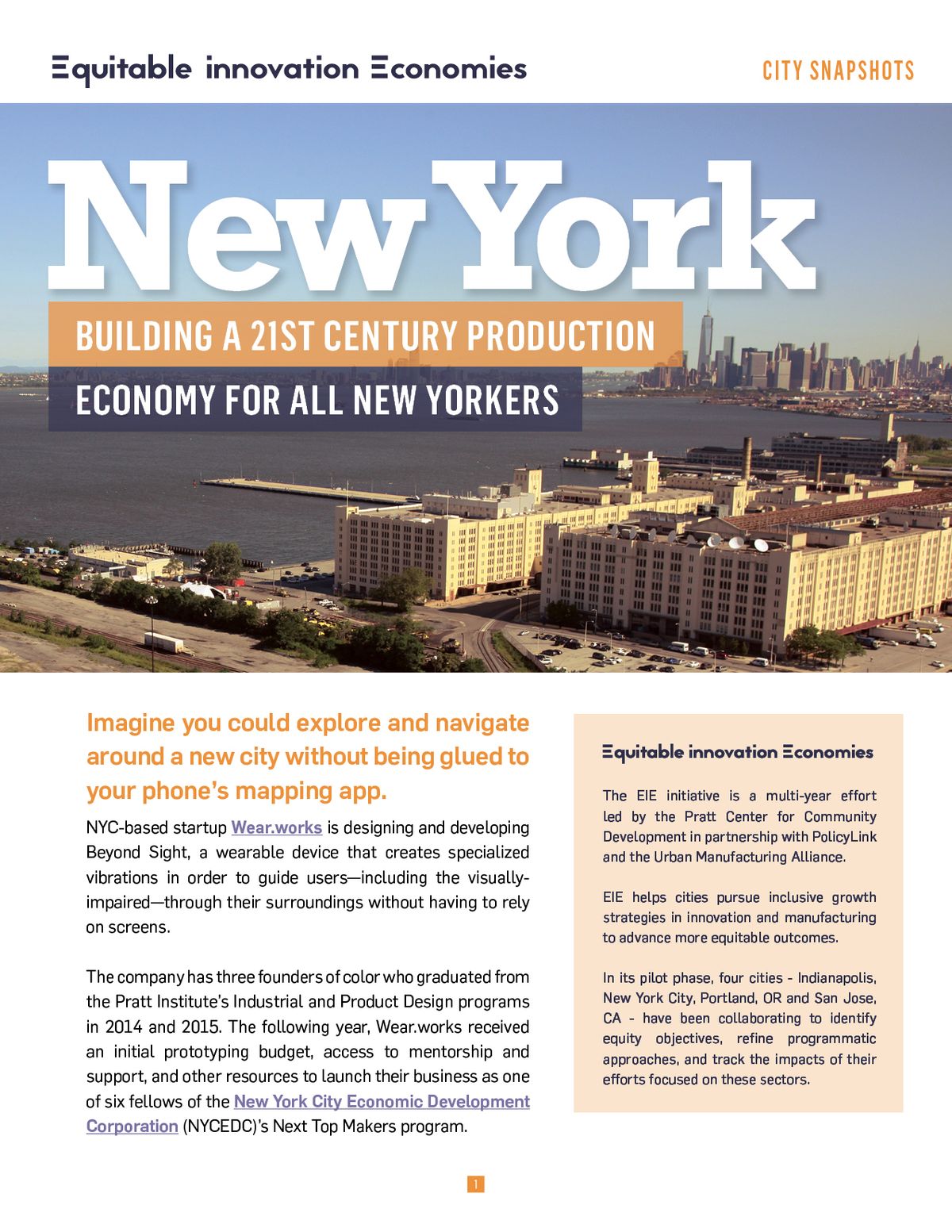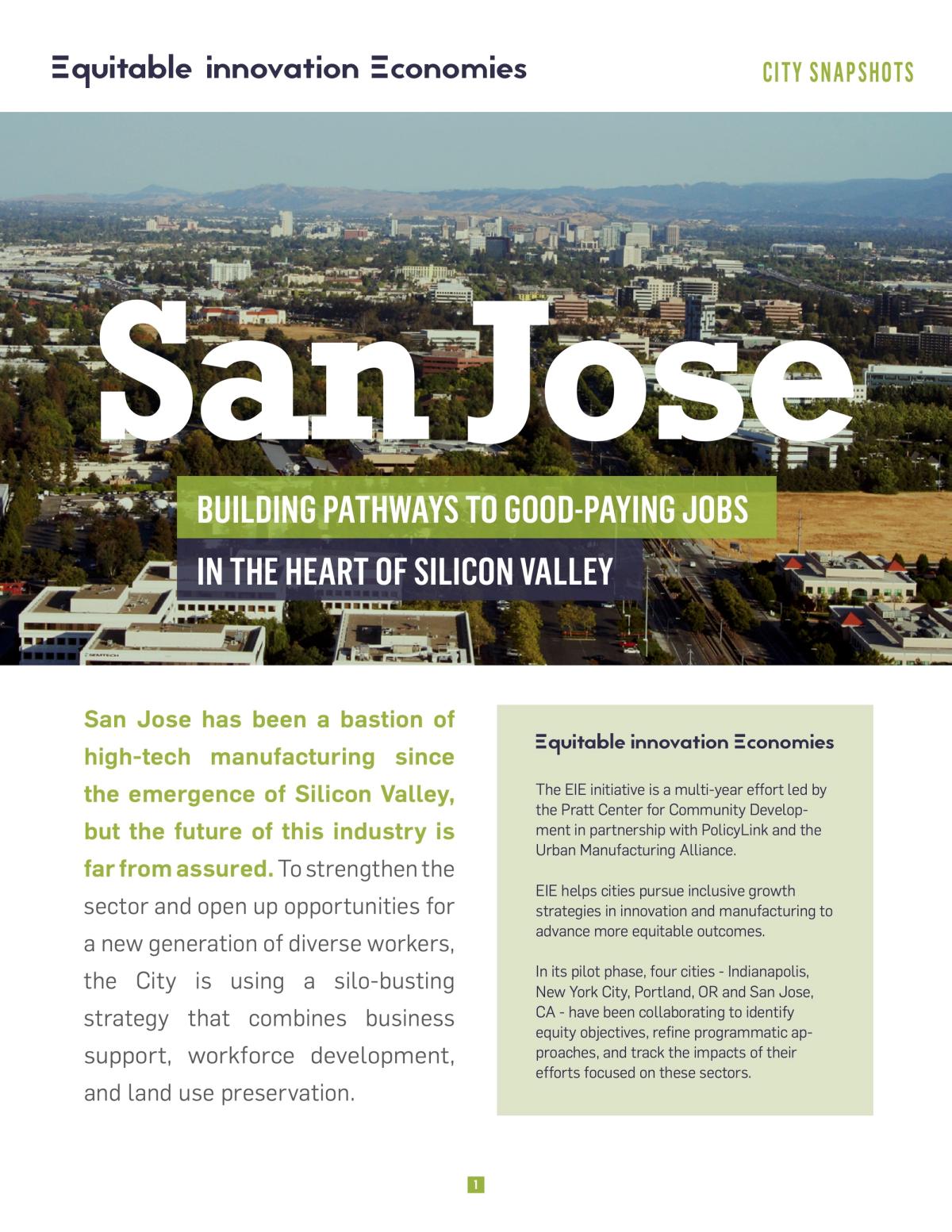Each EIE pilot city focused on a deliberate, holistic approach that integrated equitable growth principles into land use, business development, entrepreneurship, technology transfer, and workforce strategies while preserving or creating good job opportunities for people with a range of skills and backgrounds. Here are select strategies the pilot cities focused on:
Support entrepreneurs of color in manufacturing and innovation.
Many entrepreneurs of color face unique challenges to starting and growing their own companies, including barriers to accessing affordable capital, lack of access to mainstream business assistance and networks, and other challenges. Programs that are supporting innovation entrepreneurs should take deliberate action to ensure they are effectively reaching, recruiting, and retaining people of color.1 In New York City, the Next Top Makers program intentionally recruited workshop speakers from diverse backgrounds to help reach into more communities. In Portland, the Portland Development Commission ran an accelerator that focuses on people from communities that are underrepresented in tech and innovation and has helped to launch a startup fund to invest in companies with diverse founders.
- For more on the challenges and effective strategies, see the Initiative for a Competitive Inner City “Creating Inclusive High-Tech Incubators and Accelerators,” 2016.
Preserve and invest in industrial land and stable, affordable housing simultaneously.
Cities with robust innovation sectors are challenged to both preserve middle-wage jobs in industrial areas and improve housing for low-income workers. Land use strategies should pursue both affordable housing and preservation of middle-wage jobs simultaneously. San Jose chose to prioritize industrial and manufacturing uses in its industrial land rather than convert it to office parks or housing while also promoting affordable housing development along transit corridors. In Indianapolis, the city and partners re-invested in urban industrial corridors to revitalize manufacturing activity, increase employment opportunities, and stabilize nearby neighborhoods. This included participation of community groups in the revitalization process to ensure ongoing advancement of equity goals.
Invest in job training into skilled manufacturing jobs for residents with barriers to employment.
Job training and placement programs can help manufacturers find workers with the right skills while creating pathways into jobs that pay family-supporting wages. In San Jose, the city helped to connect young people from disadvantaged communities to employment opportunities with local manufacturers looking for talent.
Prioritize the creation of jobs that pay a living wage.
Jobs that pay good wages and provide career opportunities in the innovation economy and manufacturing help to drive economic growth that benefits all workers. In Indianapolis, LISC worked with a local developer to track workforce demographics, wages, and opportunities for advancement in the companies that locate in a new industrial site. Their goal was to ensure that businesses are providing good jobs and opportunities for local residents.
Strengthen the manufacturing base through technology transfer partnerships.
Access to advanced manufacturing technologies and product development opportunities can help existing manufacturers compete. Strategies that facilitate technology transfer partnerships between R&D firms, universities, business extension partners, and other service providers enable manufacturers to adopt the latest technologies and provide skills training for their workforce. New York City launched FutureWorks, a new program that supports early stage companies using or developing new technologies and products and helps existing manufacturers integrate advanced manufacturing processes.
Deepen partnerships and expand networks into low-income communities of color.
Building long-term and authentic relationships with local community members can help to ensure that the priorities and strategies a city implements will be responsive to the needs of the communities they are intended to benefit. In Portland, the Portland Development Commission adopted a new strategic plan that acknowledges the agency’s history of contributing to the displacement of Portland’s Black community and commits to becoming an anti-racist, multicultural organization and building long-term relationships in communities of color.
